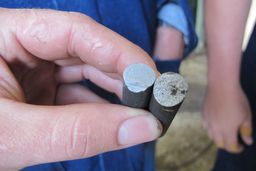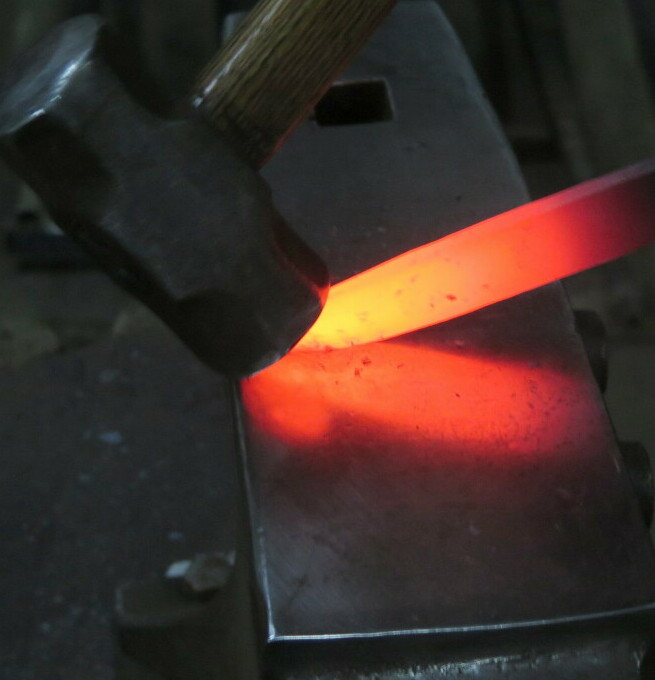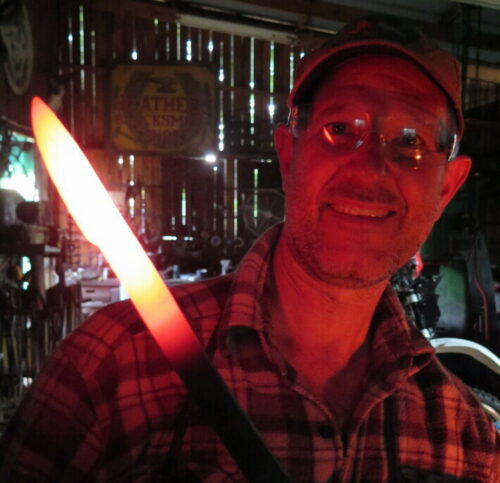June 17, 2024 by Heather
Upper And Lower Forging Limits
Mastering the Art of Temperature Control in Steel Forging – Upper and Lower Forging Temperatures
Forging a blade is an intricate dance of heat, hammer, and skill. Maintaining the correct forging temperatures is one of the most critical elements in this process. Proper temperature control not only prevents carbon loss but also ensures the crystalline structure of the steel remains fine-grained and robust. Understanding and appreciating these temperature nuances can significantly enhance the performance and durability of your blade. Heat treatment begins from your very first heat.
As an Amazon Associate I earn from qualifying purchases.
List of Knife-Related Suppliers in South Africa.
The Importance of Critical Temperature
The “critical temperature” is a pivotal point in the forging process. It is the temperature at which the steel’s crystalline structure transforms, indicated by a bright orange glow. Determining this temperature accurately is crucial, as forging above it can cause the steel to become coarse-grained and weak.

Finding the Critical Temperature
To find the critical temperature: This method is extremely important when doing any type of heat treatment of your blade. Please read the literature that came with your steel. The steel manufacturers will give you all the information on the forging temperatures to use as well as heat treatment specifications.
- Use a Magnet: Heat the steel and regularly test with a magnet. The critical temperature is reached when the magnet no longer sticks to the steel. Remember, it is tested on a “rising heat”, it is the lowest temperature where the magnet no longer sticks to the steel. You cannot overheat the steel then cool it and test it. Telescopic pickup magnets https://amzn.to/3zy1iNa are great to use as you can extend them to test the steel just as it comes out of the forge, thereby avoiding the problem of the steel cooling when brought right out of the forge, which would give you a cooler temperature reading.
- Memorise the Colour: Pay attention to the colour of the steel at this temperature. Note that this colour can vary depending on the type of steel and ambient light conditions. Regular testing and observation are essential to get it right. Do not rely on your memory. Always use your magnet and try to repeat your ambient light conditions.
Forging Temperature Ranges
Once familiar with the critical temperature, you can manage the forging process more effectively by controlling the temperature range:
- Early Stages: Begin forging at a higher temperature (yellow), which is above the critical temperature.
- Progressive Stages: Gradually work the steel at slightly cooler temperatures (dark orange) as you shape the blade.
Maintaining this decreasing temperature cycle helps refine the grain size of the steel, ensuring it remains fine-grained and strong. It is crucial to avoid overheating at any stage, as even a brief lapse can coarsen the grain structure, undoing all previous efforts.
Avoiding Cold Forging
While temperature control is vital, it’s equally important to avoid forging at too low temperatures. Forging on a “cold” blade (black heat) is unacceptable as the steel becomes brittle and prone to breaking. Always ensure the steel has some colour during forging and straightening to maintain its integrity and prevent damage.
Practical Tips for Temperature Management
- Regular Testing: Continuously test the steel with a magnet to stay within the appropriate temperature range.
- Visual Cues: Develop an eye for the colours associated with different temperatures and use them as a guide.
- Consistent Monitoring: Keep a close watch on the steel’s temperature throughout the forging process to avoid overheating.
Patience and Precision: Exercise patience and precision, adjusting your forging technique as the temperature changes.

Conclusion
Mastering the correct forging temperatures is a fundamental skill for any bladesmith. By understanding the critical temperature and managing the forging process within the optimal temperature ranges, you can produce strong and high-performing blades. Remember, the key is consistent monitoring and a keen eye for detail. Happy forging!




Leave a Reply